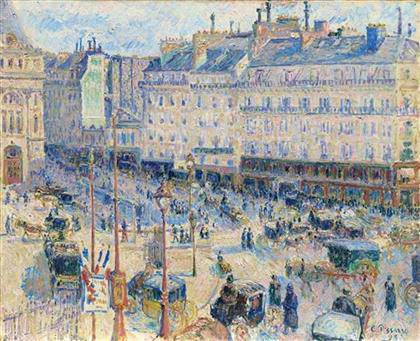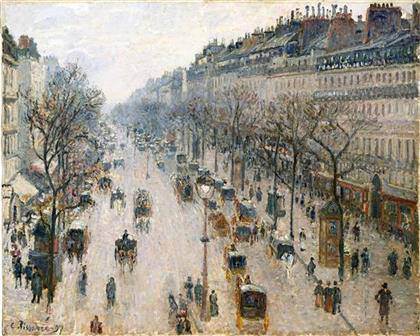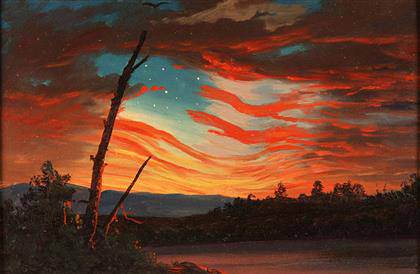
Camille Pissarro (1830‐1903)
La Place du Havre, Paris, 1893.
Oil on canvas, 60,1 x 73,5 cm.
The Art Institute of Chicago, Potter Palmer Collection

Camille Pissarro (1830‐1903)
The Boulevard Montmartre on a winter morning, 1897.
Oil on canvas, 64,8 x 81,3 cm.
Metropolitan Museum of Art, New York
Camille Pissarro – exhibition at the Thyssen Museum The Museo Thyssen‐Bornemisza presents the first monographic exhibition in Spain on the Impressionist painter Camille Pissarro (1830‐1903). 4 June to 15 September, 2013.]]>
Source: Thyssen Museum, Madrid
The exhibition brings together 79 works loaned from numerous museums and collections world‐wide, including a famous palette on which the artist painted a rural scene using all the colours of the spectrum. Landscape, the prevailing genre within Pissarro’s oeuvre, provides the focus of theexhibition, which is organised chronologically around the different places in which the artist lived and worked. While Pissarro spent most of his life in villages such as Louveciennes, Pointoise and Éragny, the last two rooms in the exhibition are devoted to the urban views that he painted in the last decade of his life, including his numerous depictions of Paris, London, Rouen, Dieppe and Le Havre.
“Humble and colossal”, as his friend Cézanne described him, Camille Pissarro is undoubtedly the fundamental figure within Impressionism but at the same time the least recognised. Cézanne himself said: “[…] perhaps we all come from Pissarro. He had the good fortune to be born in the Antilles, where he learned to draw without a teacher. He told me so himself. By 1865 he had already eliminated black, dark brown, Sienna earth tones and ochres. It’s a fact. ‘I only painted with the three primary colours and their immediate derivatives’, he told me. As a result, Pissarro was the first Impressionist.”
It was Pissarro who, in 1873, wrote the statutes of the artists’ group that was about to launch its group exhibitions. He was also the only artist of the group to take part in all eight exhibitions between 1874 and 1886. However, Pissarro’s career would be overshadowed by the resounding success of his friend and fellow Impressionist Claude Monet. The present exhibition sets out to restore his reputation, not just as the “first Impressionist” but also as the master of the pioneers of modern art.
From the time the Impressionist group first emerged, critics considered Pissarro to be a rural landscape painter, contrasting him with the Parisian sophistication of Monet and others. But, as Richard R. Brettell has noted, Pissarro’s painting cannot be seen as solely an exaltation of rural life: from an early date the artist also focused to a considerable degree on industry in the landscape, as is evident in his views of the outskirts of London and his paintings of factories in Pointoise and its surroundings.
Related content
Hyperrealism 1967-2012 / at the Thyssen Museum, Madrid (exhibition, 2013)
Follow us on:


